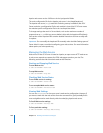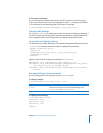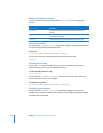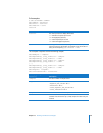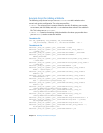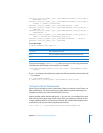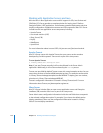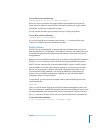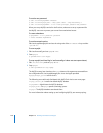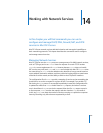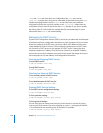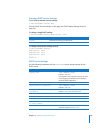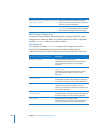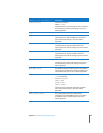
214 Chapter 13 Working with Web Technologies
Working with Application Servers and Java
With the built-in JBoss application server and full support for JSPs, Java Servlets and
SOAP, Mac OS X Server provides a complete solution for hosting Java 2 Platform
Enterprise Edition (J2EE) applications. It also features powerful deployment tools that
simplify configuration of application resources and EJB components. Mac OS X Server
includes several Jave application server components, including:
 Apache Tomcat
 Java virtual machine (J2SE)
 JBoss Server (EJB)
 MySQL
 WebObjects
 Apache Axis
For more information about Java and J2EE, visit java.sun.com/j2ee/overview.html.
Apache Tomcat
Mac OS X Server comes with Apache Tomcat, the open source servlet container
developed by Sun Microsystems. Tomcat runs as part of the Java process.
To start Apache Tomcat:
$ /Library/Tomcat/bin./startup.sh start
Note: If you start Tomcat manually, it will not be reflected in the Server Admin
application. Additionally, it will not be monitored by the launchd process.
Tomcat uses port 9006 by default. Tomcat comes with several example servlets. You can
access these servlets at localhost:9006/examples/servlets/. The example servlets reside
in /Library/Tomcat/webapps/examples/servlets/WEB-INF. To deploy your own servlets,
place them in /Library/Tomcat/webapps/WEB-INF.
Tomcat’s configuration information is located in /Library/Tomcat/conf/. For more
information about Tomcat, see jakarta.apache.org/tomcat.
JBoss Server
Mac OS X Server includes JBoss, an open source application server and Enterprise
JavaBeans (EJB) container. JBoss runs as part of the Java process.
Server Admin stores configuration information inside the conf folder that corresponds
to the selected configuration option. For example, if you choose the default option
(deploy-standalone), JBoss uses the configuration information located in /Library/
JBoss/3.2/server/deploy-standalone/.





